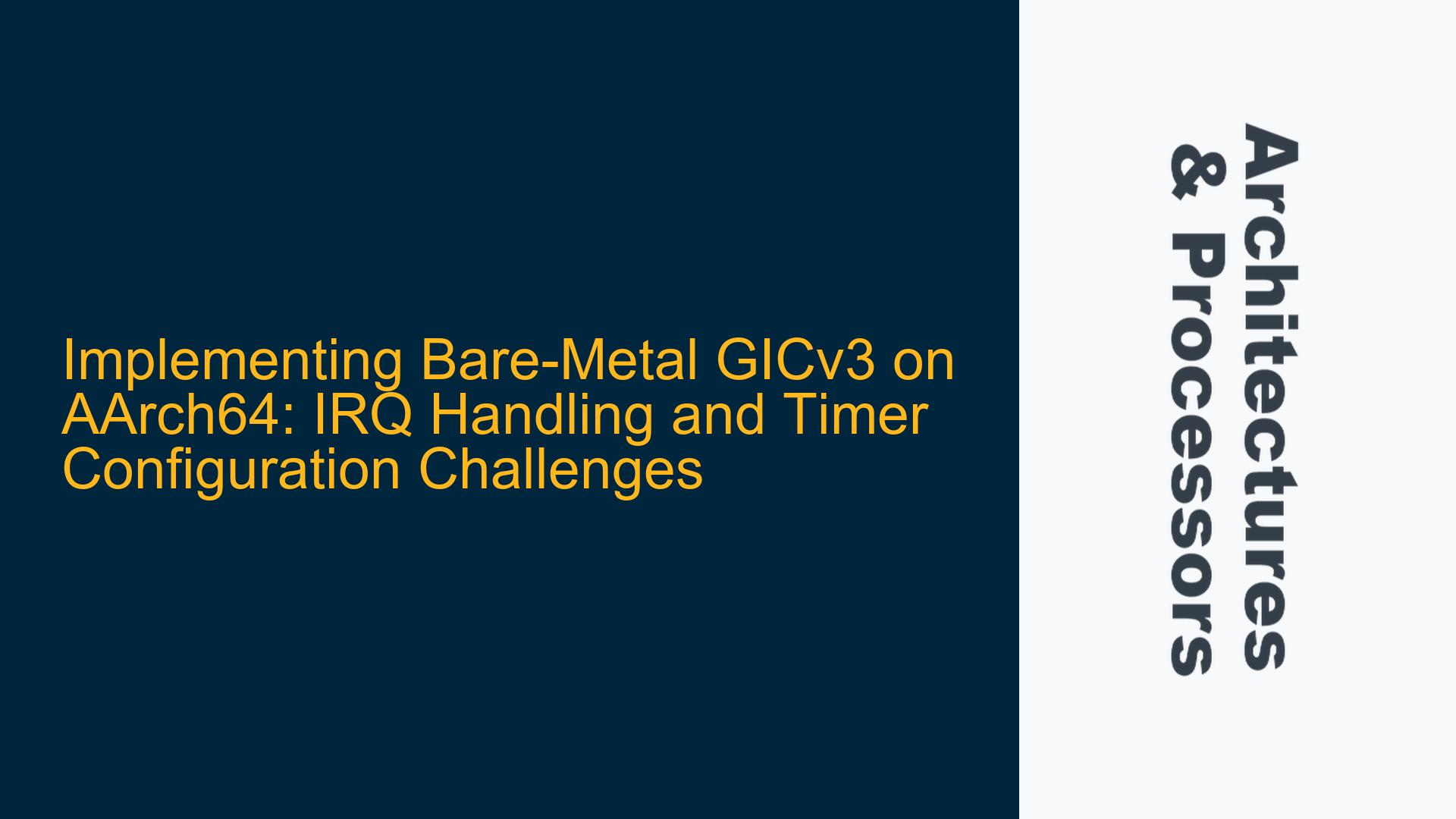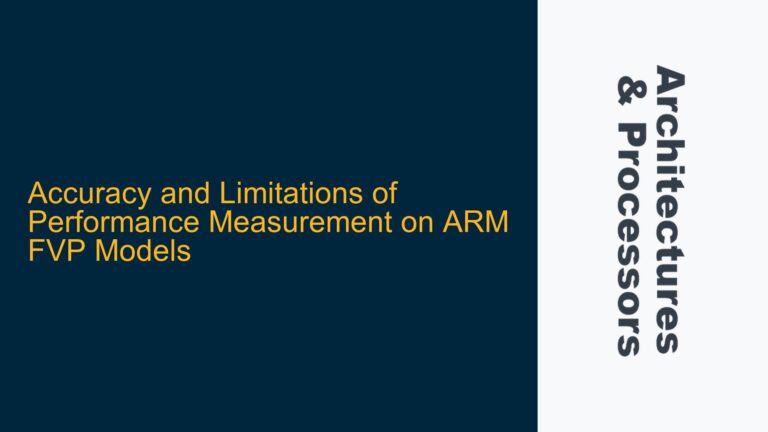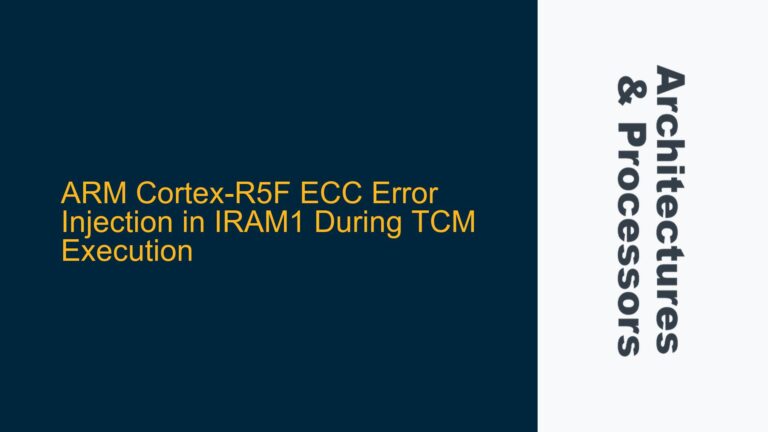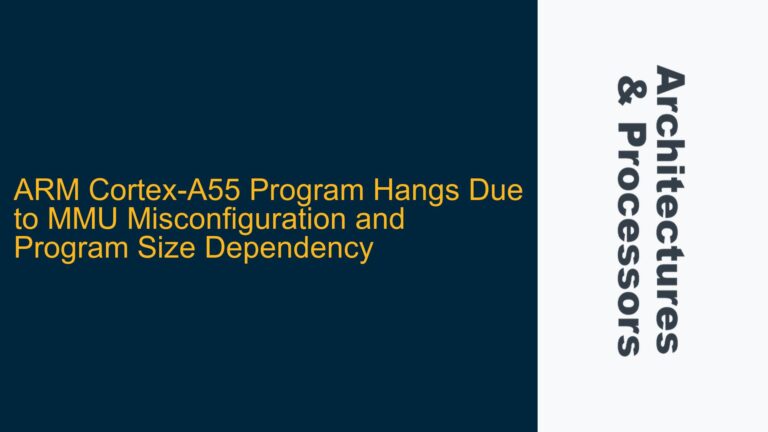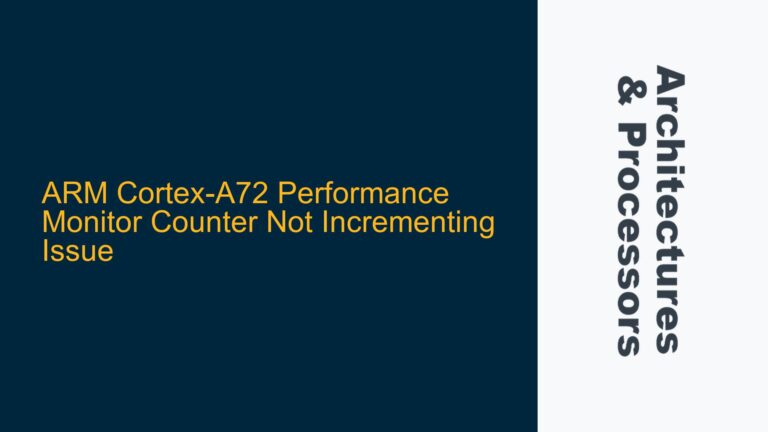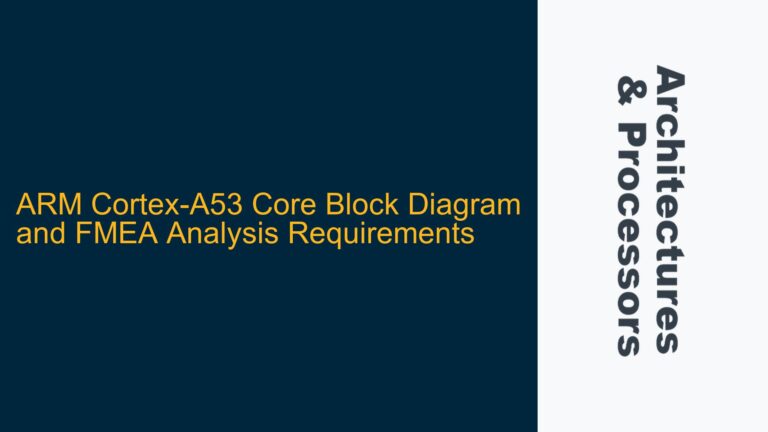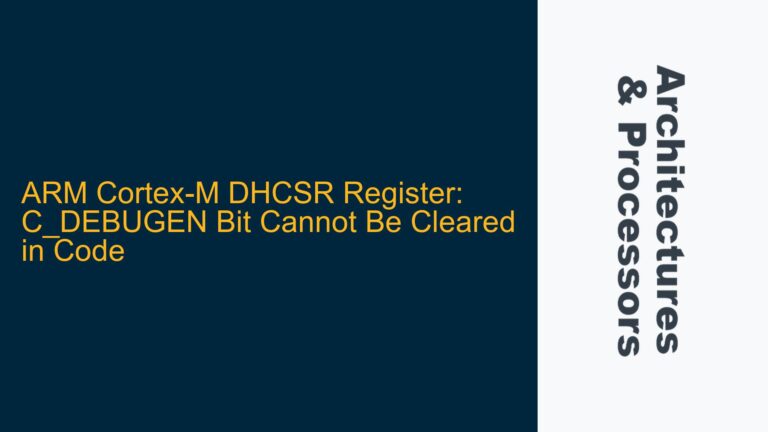GICv3 Initialization and IRQ Handling in AArch64 Bare-Metal Environments
The Generic Interrupt Controller version 3 (GICv3) is a critical component in ARM-based systems, particularly when working with AArch64 architectures. It manages interrupt routing, prioritization, and distribution across multiple cores. Implementing a bare-metal GICv3 setup involves configuring the GIC Distributor (GICD), CPU Interfaces (GICC), and Redistributors (GICR). The primary challenge lies in correctly initializing these components and ensuring that interrupts, such as those from a timer, are properly captured and handled.
The GICv3 architecture introduces several complexities compared to GICv2, including support for affinity routing, system registers for CPU interface access, and the separation of redistributor functionality. These changes require a deep understanding of the ARMv8-A architecture, particularly the system register interface and memory-mapped registers. A common issue arises when developers attempt to port GICv2 code to GICv3 without fully accounting for these architectural differences, leading to missed interrupts or incorrect prioritization.
Missing Redistributor Configuration and System Register Setup
One of the most frequent causes of GICv3 initialization failures is the omission of redistributor configuration. Unlike GICv2, where the CPU interface and distributor were sufficient for basic interrupt handling, GICv3 requires explicit configuration of the redistributor for each core. The redistributor is responsible for managing interrupts targeted at specific cores and must be programmed with the correct affinity values. Failure to configure the redistributor results in interrupts not being routed to the intended cores.
Another critical area is the setup of system registers for the CPU interface. In GICv3, the CPU interface is accessed through system registers such as ICC_*_EL1 rather than memory-mapped registers. This shift necessitates changes in the way interrupts are enabled and acknowledged. For example, enabling interrupts requires setting the ICC_IGRPEN1_EL1 register, while acknowledging an interrupt involves reading the ICC_IAR1_EL1 register. Misconfigurations in these registers can lead to interrupts being ignored or incorrectly handled.
Additionally, the GICD_ISENABLER register must be correctly programmed to enable specific interrupt IDs. Each bit in this register corresponds to an interrupt ID, and setting the appropriate bits is essential for enabling the desired interrupts. However, this step is often overlooked or incorrectly implemented, particularly when transitioning from GICv2 to GICv3.
Step-by-Step GICv3 Initialization and Timer IRQ Handling
To address these challenges, a systematic approach to GICv3 initialization and timer IRQ handling is essential. The following steps outline the process:
-
GIC Distributor (GICD) Initialization: Begin by configuring the GICD. This involves setting up the GICD_CTLR register to enable the distributor and configuring the GICD_ISENABLER register to enable specific interrupt IDs. Ensure that the interrupt IDs for the timer and any other required peripherals are enabled.
-
Redistributor (GICR) Configuration: For each core, configure the redistributor by setting the GICR_WAKER register to wake up the redistributor and ensure it is ready for configuration. Program the GICR_CTLR register to enable the redistributor and set the GICR_TYPER register to determine the affinity of the redistributor.
-
CPU Interface (GICC) Setup via System Registers: Access the CPU interface through system registers. Set the
ICC_IGRPEN1_EL1register to enable group 1 interrupts. Configure theICC_PMR_EL1register to set the interrupt priority mask, ensuring that the desired priority level is allowed. -
Timer Configuration: Configure the system timer to generate interrupts at the desired interval. This typically involves setting up a counter and comparator in the timer peripheral. Ensure that the timer interrupt ID is enabled in the GICD_ISENABLER register.
-
Interrupt Handling: Implement an interrupt handler to capture and process the timer interrupts. In the handler, read the
ICC_IAR1_EL1register to acknowledge the interrupt and determine the interrupt ID. After processing, write the interrupt ID to theICC_EOIR1_EL1register to signal completion. -
Testing and Debugging: Use a debugger to step through the initialization code and verify that each register is correctly configured. Monitor the interrupt handling process to ensure that interrupts are being captured and processed as expected.
By following these steps, developers can successfully implement a bare-metal GICv3 setup on AArch64, enabling reliable interrupt handling for timers and other peripherals. This approach addresses the common pitfalls associated with GICv3 initialization and provides a solid foundation for further development.
